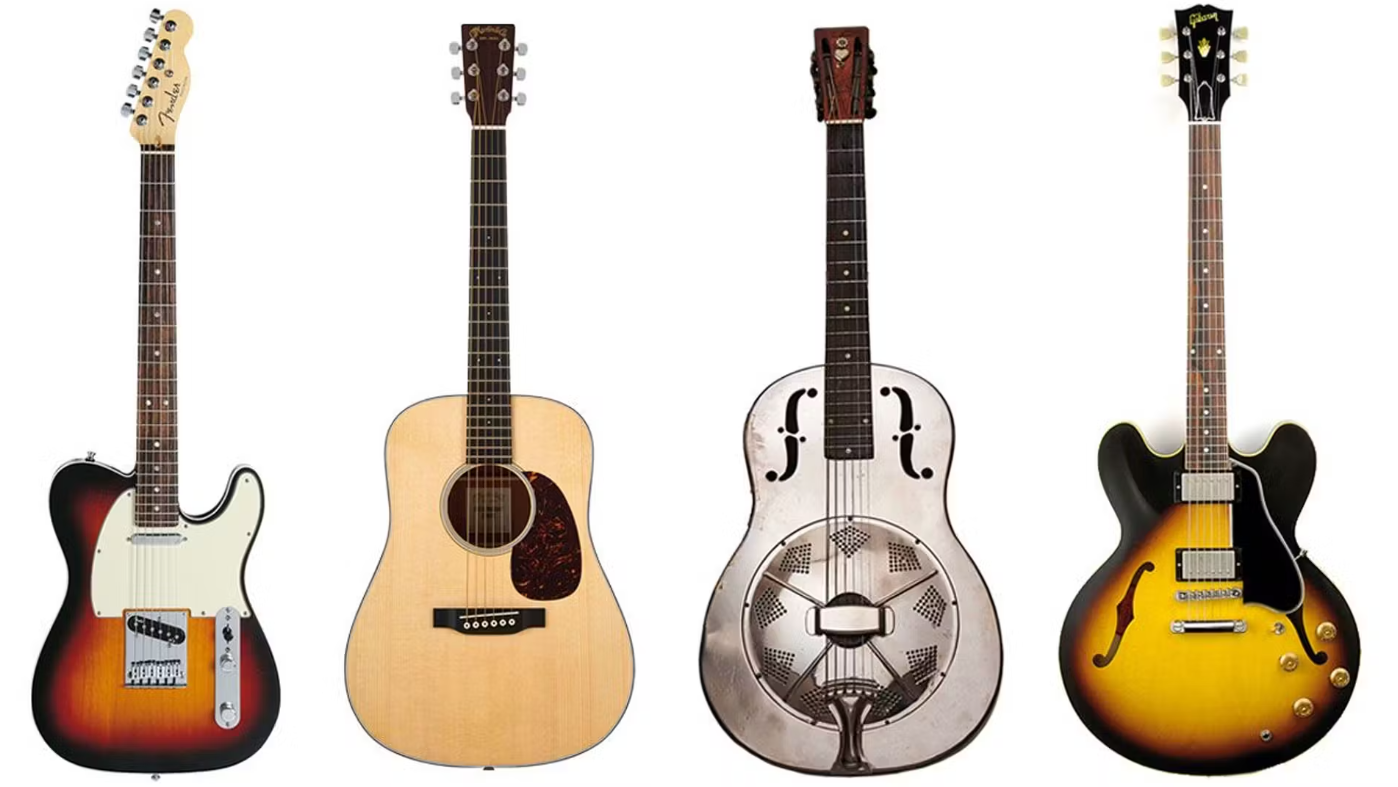Choosing your first guitar is a crucial step in learning to play, and making the wrong choice can either slow down your progress or make learning unnecessarily frustrating. Many beginners assume that they should start with whatever they “like,” but a smarter approach is to choose based on practicality—considering the music genre you aim to play, how easy the guitar is to learn on, and whether it makes sense to invest in an electric guitar from the start.
This guide will break down the three main types of guitars—classical, acoustic, and electric—while providing practical advice on how to make the best decision.
Understanding the Three Main Guitar Types
Before choosing, you need to know the core differences between classical, acoustic, and electric guitars. Each serves a different function, and your decision should not just be based on preference but on what makes sense for your learning path.
1. Classical Guitar (Nylon-String) – The Best for Absolute Beginners
Best for: Beginners, fingerstyle, classical, flamenco, and Latin music.
Why choose this? Because it’s the easiest to learn on.
- Easier on the fingers: Nylon strings are softer and more forgiving than steel strings.
- Wider neck: Helps with finger positioning and builds proper technique, though it can be harder for small hands.
- Quieter sound: Less intrusive for home practice.
When to choose a classical guitar:
- If you are a complete beginner with no prior experience.
- If you’re interested in classical, flamenco, fingerstyle, or Latin music.
- If you want to build finger strength and technique before moving to another type.
2. Acoustic Guitar (Steel-String) – For Folk, Pop, and Singer-Songwriters
Best for: Folk, country, pop, blues, and light rock.
Why choose this? Because it’s the most versatile and commonly used.
- More versatile than classical guitars: Used in many popular genres.
- Brighter and louder sound: More projection than a classical guitar.
- Thinner neck: Easier for smaller hands, but steel strings are harder on fingers.
- Requires better technique from the start: String tension is higher than on classical guitars.
When to choose an acoustic guitar:
- If you plan to play pop, folk, blues, country, or singer-songwriter music.
- If you don’t want to use an amplifier and prefer a portable, all-in-one instrument.
3. Electric Guitar – For Rock, Blues, and Metal
Best for: Rock, blues, metal, jazz, and fusion.
Why choose this? Because it’s easier to play and has a wider range of sounds.
- Lighter string tension: Easier on the fingers compared to acoustic guitars.
- Smaller body size: More comfortable to hold for longer practice sessions.
- Requires an amplifier: Cannot be played effectively without one.
- More expensive investment: Requires additional equipment like cables, amps, and effects pedals.
When to choose an electric guitar:
- If you want to play rock, metal, blues, or jazz.
- If you are willing to invest in an amplifier and other gear.
- If you need an easier-to-play instrument and plan to explore effects and different tones.
Guitar Materials and Build Quality
The quality of a guitar affects its sound and durability. Below is a comparison of different tonewoods and their impact on sound.
| Wood Type | Sound Characteristics | Common Uses |
|---|---|---|
| Spruce | Bright, clear, strong projection | Acoustic guitar tops |
| Cedar | Warm, smooth tones | Classical guitars |
| Mahogany | Rich, warm tones, good sustain | Acoustic and electric guitars |
| Maple | Bright and articulate | Electric guitar bodies |
| Rosewood | Deep, complex tones | Fingerboards and backs |
Choosing the Right Guitar Based on Your Learning Goals
It’s not just about what “feels right” – the type of guitar you start with can influence how well you progress. Here’s what to consider:
- If you’re unsure about committing to guitar long-term → Start with a classical or acoustic guitar (lower cost, simpler setup).
- If you already know you want to play rock → You can start with an electric, but expect extra costs for gear.
- If you want to build proper finger strength → Start with a classical guitar.
- If you want to play pop and modern songs → Start with an acoustic guitar.
Budget Considerations
| Price Range | Features | Best For |
|---|---|---|
| $100 – $300 | Basic models, good for beginners | Casual learners |
| $300 – $800 | Better build quality, improved sound | Serious beginners and intermediate players |
| $800+ | Professional quality, premium materials | Advanced players, stage performers |
Final Advice
It’s common for beginners to assume they should start with an electric guitar because it “looks cool” or because they like rock music. However, unless you are fully committed to playing rock or metal, it’s usually best to start with a classical or acoustic guitar.
They are simpler, require no extra gear, and allow you to build finger strength and technique before deciding whether to invest in an electric guitar.
FAQs
Can I learn guitar on an electric one?
Yes, but you need extra equipment like an amplifier and cables. Classical or acoustic guitars are more practical for beginners.
What is the best guitar for fingerpicking?
Classical guitars are best for fingerpicking due to their wide neck and soft nylon strings.
How long does it take to learn guitar?
With regular practice, most beginners can play basic songs in 3-6 months.

